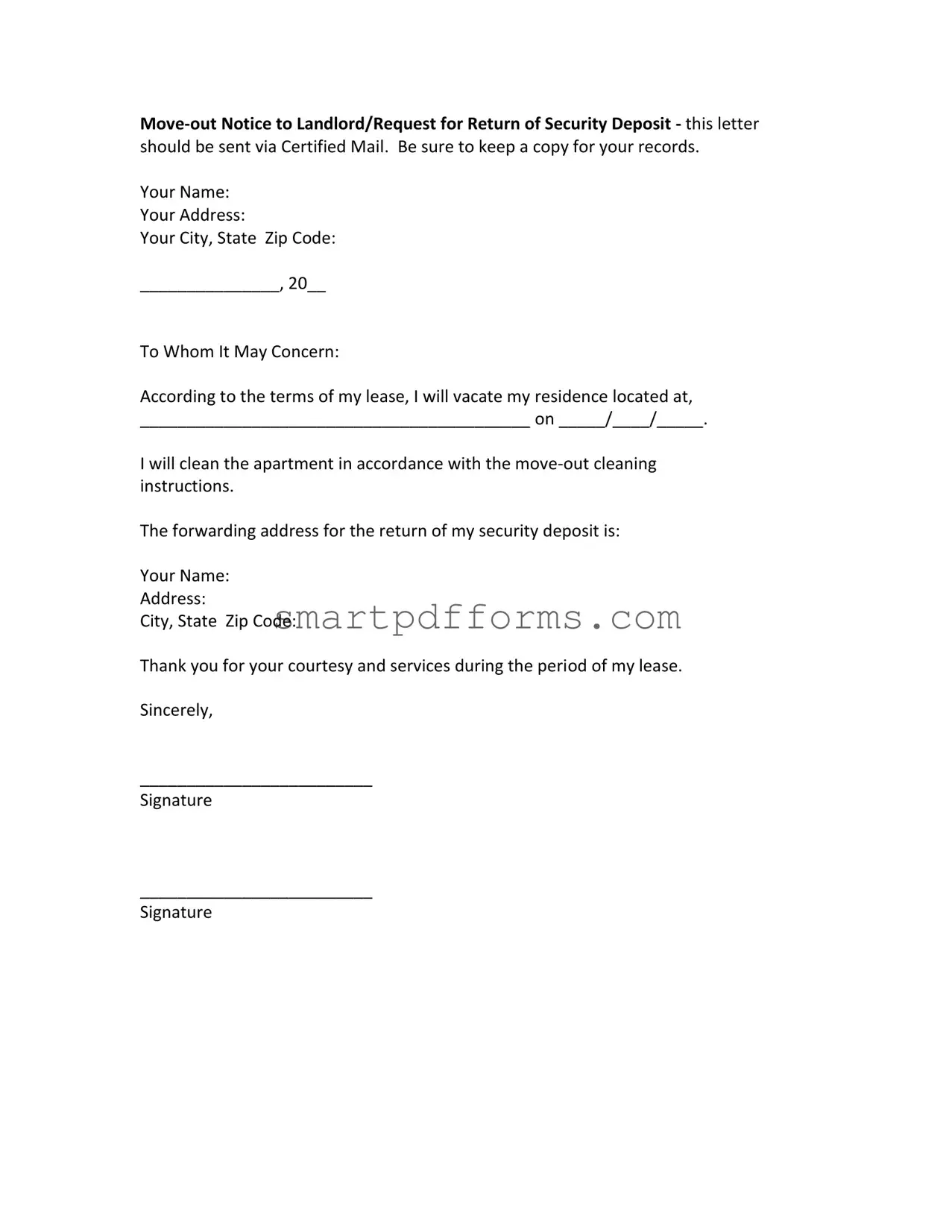Blank Move Out Notice Letter PDF Template
The Move Out Notice Letter form serves as an official communication tool for tenants to inform their landlords about their intention to vacate the premises and to request the return of their security deposit. This letter should be dispatched via Certified Mail and it's advisable for tenants to keep a copy for their records. The form requires tenants to fill in their personal details, the date of moving out, the address of the property, and a forwarding address for the security deposit.
Ensure your move is smooth and your rights are protected by filling out the Move Out Notice Letter form. Click the button below to start.
Make This Document Now
